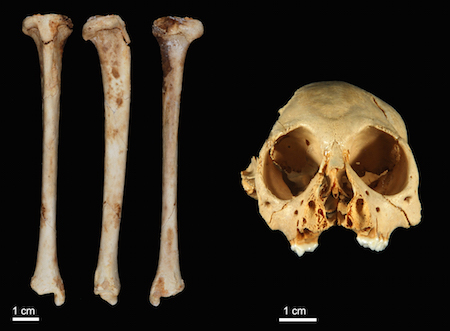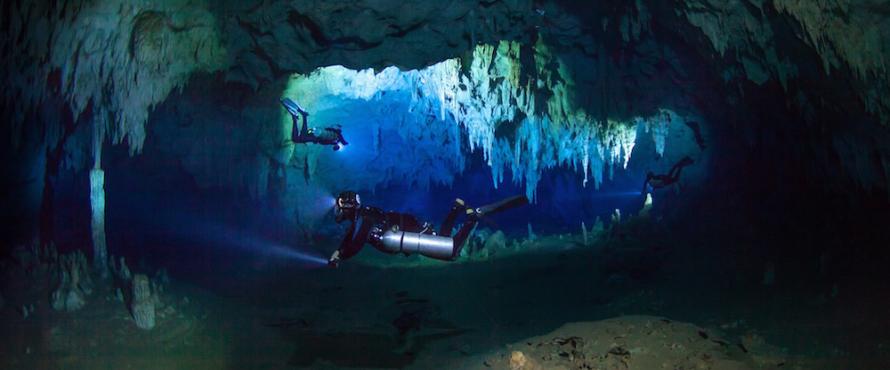An international team of scientists has dated a species of fossil monkey found across the Caribbean to just over 1 million years old.
The discovery was made after the researchers recovered a fossil tibia (shin bone) belonging to the species of extinct monkey Antillothrix bernensis from an underwater cave in Altagracia Province, Dominican Republic. The fossil was embedded in a limestone rock that was dated using the uranium-series technique.
In a paper published this week in the Journal of Human Evolution, the team used three-dimensional geometric morphometrics to confirm that the fossil tibia does indeed belong to Antillothrix bernensis, a primate that we now know existed on Hispaniola relatively unchanged for more than a million years. This monkey, roughly the size of a small cat, was tree-dwelling and lived largely on a diet of fruit and leaves.
Siobhán Cooke of Northeastern Illinois University’s Department of Anthropology, a lead researcher involved in finding and analyzing the fossil, said scientists have been puzzling over the age of primate fossils from this region since the days of Charles Darwin and Alfred Russel Wallace.
“Our analyses show for the first time that Antillothrix has existed in the Dominican Republic for over a million years,” Cooke said. “This result was surprising and gives us new insight into the evolution of this species in the Caribbean.”
Cooke and Alfred Rosenberger of Brooklyn College have been working in the Dominican Republic since 2009, searching for rare fossil remains of endemic mammals to investigate how these animals were adapted to their unique, island environments.
“Very little was known about the native monkey from this island,” Cooke said. “Prior to our discoveries in Altagracia, we knew almost nothing even though this species was first described by Renato Rímoli back in 1977.”
To better understand how this primate was uniquely adapted to its environment, Melissa Tallman and her student Andrea Morrow, from Grand Valley State University, used a specialized technique to model the three-dimensional shape of the monkey’s leg bone. This helped them to reconstruct how the small primate might have moved about in its environment and allowed the comparison of relatively young examples of Antillothrix bones to the newly discovered million-year-old specimens.
At the University of Melbourne, Helen Green and Robyn Pickering worked in the state-of-the-art Isotope Chronology Laboratory in the School of Earth Sciences, where they measured the levels of uranium, thorium and lead present in the limestone rocks today using the results to calculate an age of 1.3 million years, plus or minus 0.11 million years.
This discovery was made possible by the collaboration between the Dominican Speleological Society, the Museo del Hombre Dominicano in Santo Domingo, and Brooklyn College, CUNY. Cave divers Cristian Pittaro, Phillip Lehman, Dave Pratt, and Victoria Alexandrova were responsible for the find within Padre Nuestro Cave. Today these caves are underwater, making them a challenging environment to search for fossils in, meaning that teamwork is essential.

Photo above by Siobhán Cooke. Top photo of cave divers by Laurent Benoit.








